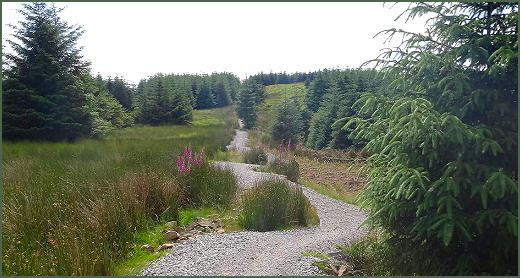Gisburn
OS Grid ref:- SD825485
 The village of Gisburn is situated in Lancashire's scenic Ribble Valley and lies 8 miles (13 km) northeast of Clitheroe and 11 miles (18 km) to the west of Skipton.
The village of Gisburn is situated in Lancashire's scenic Ribble Valley and lies 8 miles (13 km) northeast of Clitheroe and 11 miles (18 km) to the west of Skipton.
The village's chharacterful wide main street still retains some of its cobblestones. The Ribblesdale Arms Hotel dates back to 1635 and has now been converted into luxury flats.
The ancient village church of St Mary the Virgin lies at the centre of Gisburn. Early charters give the priest of Gisburn, between 1140 and 1146, as one Renulf, and it has been suggested that the foundations of the church date from 1135. At this time, the church may have had a dual dedication, to St Mary the Virgin, and St Andrew. The dual dedication may have been an attempt at dissuading marauding Scottish armies from desecrating the church and its grounds.
The church boasts Norman windows, the North and South windows still contain stained glass dating from the fourteenth century.The large cylindrical pillars at the front of the church are of twelfth century origin. The date of the other pillars is later, perhaps as late as the sixteenth century, when the church is believed to have been restored. Part of the archway originated from Sawley Abbey following its destruction at the Dissolution.
 In 1612 a resident of the village, Jennet Preston, was tried at the Lancashire witch trials, she was accused of causing the death of Thomas Lister by witchcraft. Her trial took place in York as the village then lay within Yorkshire. Preston was found guilty and was hanged at York Knavesmire.
In 1612 a resident of the village, Jennet Preston, was tried at the Lancashire witch trials, she was accused of causing the death of Thomas Lister by witchcraft. Her trial took place in York as the village then lay within Yorkshire. Preston was found guilty and was hanged at York Knavesmire.
During the Civil War Oliver Cromwell stayed at Gisburn for at least one night. His troopers used St Mary's to stable their horses, and broke the stained glass windows in the church. In the graveyard lies buried one of England's greatest writers of hymn tunes, Francis Duckworth (1862–1941).
Set back from the village, is Gisburne Park mansion, once the family seat of the Lord's Ribblesdale, which now serves as a private hospital. The White Bull public house at Gisburn is so named because until 1857 Gisburn Park contained a herd of white hornless wild cattle, descendants of cattle which once roamed the area. This particular herd was said to have been brought to Gisburn after the dissolution of Whalley Abbey.
Gisburn Forest, (pictured left) is the largest forest in Lancashire and is now home to one of the country's premier mountain biking trails. The forest was largely created by the Forestry Commission in 1948. Large areas of former meadow-land and pasture were planted with conifers-maily Sitka and Norway Spruce and Larch trees. As this commercial forestry has matured, the composition of more recent planting has changed to include a higher proportion of native British broad-leaved tree species such as alder, ash, beech, oak etc, to improve the wildlife habitat diversity and aesthetic appeal of Gisburn Forest.
Nearby places of interest
Lancaster Castle founded in the tenth century
Ashton Memorial in Williamson Park, Lancaster was commissioned by James Williamson, Baron Ashton as a tribute to his second wife, Jenny and was built between 1907 and 1909.
Butterfly House, Lancaster
